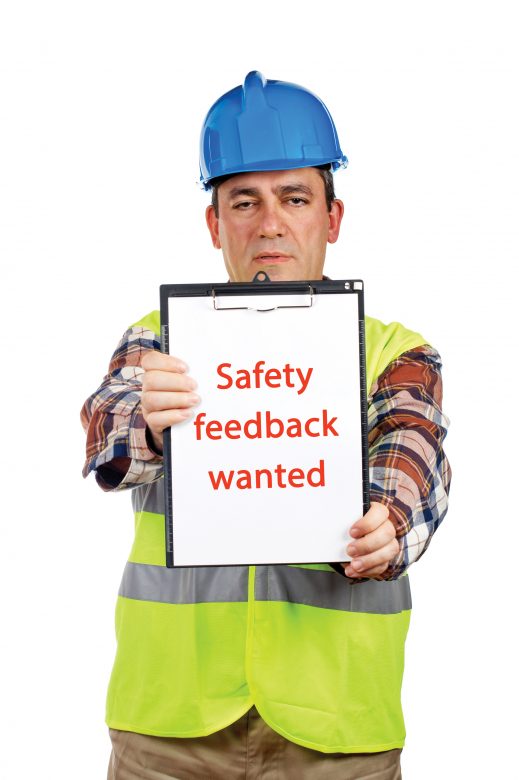OHS leaders know that feedback is worth its weight in gold. It can indicate points of failure within a safety system that are clear to employees but harder for safety managers to see. It can also highlight what’s working well, and generally provide the temperature of a company’s safety climate. That’s why so many safety professionals spend a great deal of effort to encourage employees to provide safety feedback.
There’s just one issue—regular and reliable safety feedback can be challenging to get. For employees to voluntarily offer their feedback on what they see going on, several elements need to exist in the workplace:
- Employees must be able to recognize safety issues.
- Employees need to truly believe they will be praised, not punished, if they mention a safety problem.
- Employees have to feel motivated enough to choose to tell their safety supervisor about an issue.
- Employees need to feel their input will be acted upon.
In short, it requires an advanced safety culture where everyone feels respected, motivated to look out for themselves and others, and empowered to suggest change.
Few workplaces have all these elements in place. Fortunately, most OHS professionals already have access to a wealth of safety feedback if they do a little digging.
Use what’s already there
Many safety reports actively collect feedback—but because they’re not viewed strictly as feedback forms, the kernels of employee opinions in them can be overlooked.
Consider reports like near-miss reports and accident investigations. Each of these reports documents what employees have seen, thought or had happen to them in the workplace. They’re a great place to look for employees’ opinions on some part of workplace safety. And they’re already sitting there! Yes, it’s often mixed with other types of information, and will likely need refining to get at the valuable nuggets of feedback. But it’s a great place to start.
Tweak forms and processes
Sometimes the existing feedback in near-miss reports and observation-and-feedback reports isn’t enough. Considerable time and energy has already been invested in getting workers to fill out one or two reports. So rather than spending the effort to develop a new source of feedback, consider adjusting an existing form.
Try adding a question to your standard reports or amend a question on the near-miss form to better encourage employee input. Doing it this way can dramatically reduce the learning curve and initial resistance that often comes with a new procedure.
Act on existing feedback
Before workers will reliably fill suggestion boxes or volunteer their opinion when asked, they need to believe their feedback is valued. As Kevin Cobb points out in “Safety in the Shadows”, making employees feel like they are a stakeholder can have a transformational effect on workplace safety. And there is no better way to demonstrate that someone’s opinion matters than to act on it.
In many instances, there is little that can be done in the short term (or at all) about many of the issues that employees raise. But communicating that their feedback has been taken seriously, and informing them of why immediate action can’t be taken, will prime workers to provide their observations in the future.
Impromptu questions
Thus far this post has focused on making better use of existing information. But sometimes it’s necessary to go out and gather new info. One method of gathering immediate feedback is to prepare a handful of informal questions to ask workers in a casual conversation in the lunchroom or on the shop floor.
Anecdotal Q&A may not be statistically sound decision-making research, but it allows OHS professionals to hear workers’ opinions face-to-face. It also provides the opportunity to ask follow-up questions to glean more in-depth information in the moment—which isn’t possible in many other methods of data collection. Because it’s informal, no new procedures or systems need to be established, and it also allows safety leaders to demonstrate that they’re listening to employee feedback.
Summary
There are many ways to collect and respond to workers’ safety insights. As this post outlines, not all of them are straightforward or obvious—but they can all be useful in their own way. And by using what’s already there and adjusting existing processes, OHS professionals can begin gathering and acting on safety feedback from employees immediately. Hopefully, this process will also build trust with employees that can lead to a steady flow of voluntary safety feedback in the future. For more information on successful communication between supervisors and employees, learn how to use a human factors framework.

